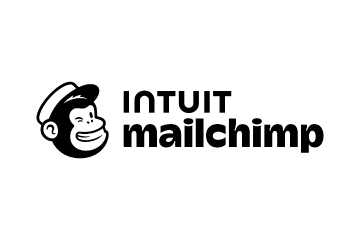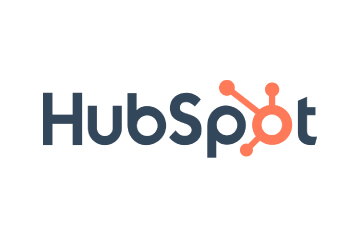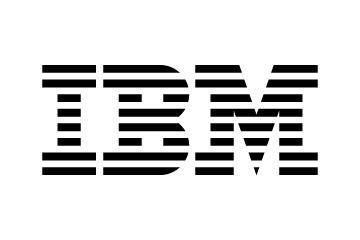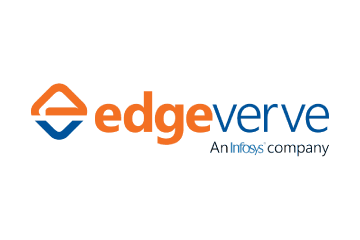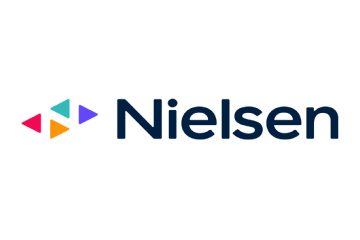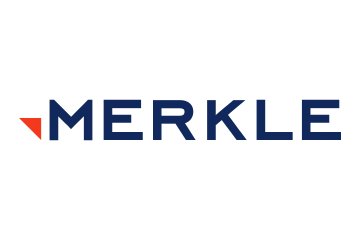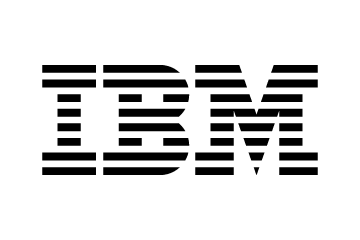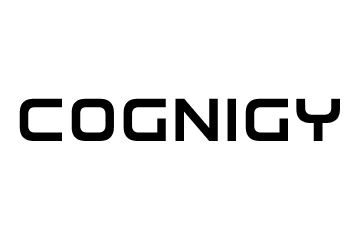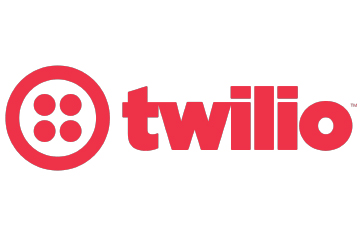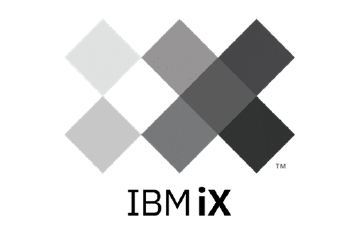Marketer Priorities for 2025
Martechvibe tracks the trends moving marketing teams and lays out the top 10 priorities for 2025, and how to action the dream.
Topics

New year, new you? The editorial team had its ear to the ground to help with future skills to focus on for the year. We have our top ten predictions for the year. Take a look at what the experts had to say about trends that will define 2025.
AI-Powered CRO with Privacy-First Optimisation
Crunch massive data, predict behaviours, tweak in real-time—and just like that, AI-powered CRO puts you on the fast track to winning big.

“AI-powered analytics should also be embedded into companies’ marketing operating systems to help analyse data from customer interactions in real-time and deliver omnichannel
insights, creating a continuous feedback loop that informs asset optimisation,” says Mark Micallef, Managing Director, Southeast Asia, Google Cloud.

Val Vacante, VP, Solutions Innovation at dentsu adds that the path to a successful AI-driven CRO is to focus on enhancing data quality, optimising resources, building transparency, ensuring privacy
and embracing adaptability.
For consumers, it means hyper-personalised product recommendations, tailored promotions, and intuitive shopping journeys. For businesses, with automated tools to identify and address conversion roadblocks, they save costs, reduce cart abandonment, and drive revenue growth. And then, there is multivariate testing.

“The increasing power of large language models and multivariate testing optimises both targeting and creative performance,” says Charles Simon, VP of Private Advertising Standards
at RTB House. “This reduces reliance on personal data, augments privacy efforts, and delivers better outcomes.”
GenAI’s ability to hyper-contextualise user behaviour without relying on personal data is a game-changer, adds Charles. It complements privacy-preserving technologies and regulatory efforts. This privacy-conscious approach will make AI-powered CRO future-proof and massively reduce risk for advertisers.
Live Commerce To Get Bigger with RMN

Consumer preferences are shifting, with 80% of people favouring live videos from brands over blogs and 82% over other content.“To truly capitalise on the dynamic world of live commerce,
brands must carefully choose content creators who align with their values and connect with their target audience on a deeper level,” says Dennis Wakabayashi, the Global Voice of CX.

Anja Lambrecht, Professor of Marketing at London Business School, also highlights the benefits of a live commerce vertical – Shoppable TV. She says that the digitisation of TV
and increased consumer interaction are also key drivers behind its growth.

Now, the integration of live commerce with Retail Media Networks (RMNs) will further enhance its impact, combining real-time engagement with data-driven advertising precision. According to
Regina Ye, CEO and Co-Founder of Topsort, “Retailers and brands leveraging this synergy will unlock new levels of personalisation, enabling them to connect with consumers in moments that matter most, closer to the point of purchase.”

With UK ecommerce click-and-collect sales expected to surpass EUR 50 billion by 2026, live commerce could account for 20% of global ecommerce sales. Priya Patel-Chomel,
Former Head of Product Marketing – Middle East, Turkey and Africa at Meta suggests that brands carefully consider the right platform by asking: Will it create a unique customer experience? Does it reach the right demographic? Is the platform equipped with seamless setup tools and proven success? Is it both affordable and effective?
READ MORE: Meet Martechvibe’s 2024 Advisory Board
The Martech Stack Needs Balance Between Consolidation and Atomisation
A 2024 report highlights a staggering 14,106 vendors, showcasing martech’s rapid growth outpacing consolidation. While smaller “point solutions” are often dismissed, they are crucial for completing marketing stacks and delivering customer experiences. Generative AI further accelerates atomisation, creating a fragmented ecosystem.

Steve Lok, a martech expert with 30 years of experience warns of unmet expectations, stating that AI in martech only delivers when it scales impact meaningfully. He says, “We will see
small and mid-sized platform players able to execute against the promise of AI in 2025, further distancing themselves from the slower moving packaged suite providers like Salesforce, who continue to head up what is newsworthy whilst bringing up the rear of real world impact.”

Frans Riemersma, Founder of Martech Tribe emphasises the need for balance between consolidation and atomisation.Over-consolidation risks diminishing customer experience,
while excessive atomisation fosters legacy systems and technical debt. The solution lies in “continuous rationalisation”—streamlining stacks to deliver cutting-edge technology and superior experiences. “The driving force behind this rationalisation -secret if you will- is the MarketingOps team. To stay relevant, I strongly recommend that brands invest in their MarketingOps capabilities in 2025.”

Scott Brinker, VP Platform Ecosystem at HubSpot introduces a paradigm shift with “service-as-a-software,” where AI agents are offered on a cost-per-outcome basis. He says, “Instead
of paying for seats or compute/storage use, where it’s up to the buyer to wield those tools successfully to achieve the outcomes they’re seeking, a new generation of AI agents are being offered on a cost-per-outcome basis.” As martech evolves, brands must adapt by balancing agility, innovation, and operational excellence to avoid stack crashes this year.
Immersive or Annoyance – Experiences Leading Mobile App Marketing
Ads within apps are becoming interactive, visually rich, and seamlessly integrated into the user experience. AI fuels this transformation by analysing user behaviour, preferences, and real-time data to deliver hyper-personalised content that resonates. It’s a secure give-and-take as apps collect valuable insights that enable brands to offer relevant product recommendations at the perfect moment.

“Mobile App Marketing will re-define user engagement with immersive ad experiences and AI-driven personalisation.Smart organisations will automate the right things in the right
ways, but also find exciting ways to connect individuals to the brand. Make it personal, make it easy, and use automation to perform at scale,” says Nate Brown, Head of CX Advisory for Metric Sherpa, Co-Founder of CX Accelerator.

Machine learning algorithms continuously refine ad delivery, ensuring users see content that aligns with their interests and intent. This creates a more immersive, less intrusive experience
that boosts conversions and brand affinity. Mahek Shah, Global Head of Media at AirAsia Move, highlights, “To measure in-app engagement and its correlation to ad performance, it’s imperative to track key metrics—CTR, CPA, and ROAS—while leveraging analytics tools and attribution models.”

Businesses that collaborate with the right partners into their growth strategies are positioned for sustained mobile app marketing success. “With sufficient commitment and prioritisation from
both partners,” notes ZeMing Chan, Head Growth Innovation (APAC & EU) at foodpanda, “Apps can deliver mutual benefits, creating a powerful synergy that enhances visibility and fosters long-term growth.”
AI for Frictionless UX Will Become The New Standard
AI is set to lead the charge in product creation, driving innovation in UX and design through automation, frictionless experiences, and dramatically reduced development time. A recent survey revealed that 48% of Product, Design, and Research professionals highlight speed as a key benefit of using AI, with additional benefits related to automation (30%) and efficiency/productivity gains (37%).
Emerging technologies such as gesture-based interfaces and zero UI are also eliminating traditional touchpoints. BMW’s Gesture Control system exemplifies this shift, enabling drivers to navigate menus with simple hand movements, while Samsung’s SmartThings ecosystem integrates voice, touch, and gesture interfaces to create seamless user interactions across smart devices.
AI is empowering designers to process vast amounts of data and optimise user interactions. This allows designers to focus more on creativity and strategic thinking. Another survey found that 92% of UX professionals use at least one generative AI tool to enhance their design processes.

“While co-pilots help you do your job better, we need consequential AI that transforms how work gets done. When AI becomes the pilot,
marketers evolve into air traffic controllers, overseeing thousands of AI-generated customer journeys rather than building individual campaigns,” says Amanda Cole, Chief Marketing Officer, Bloomreach.
Growth Marketers Show Privacy-Forward, First-party Signals
To harness first-party data’s full potential, businesses will move beyond data aggregation, AI layers and focus on goal-driven strategies.

Brands will prefer first-party data-driven strategies with publisher-driven curation. “Curation empowers them to influence the value of their inventory directly. By placing privacy-forward,
first-party signals at the core of programmatic transactions, publishers can showcase the richness of their data, driving increased demand and higher revenue,” says Chloe Grutchfield, VP of Products at Permutive.

As brands collect, curate and enhance their first-party data, the power of real-time data streaming is becoming hard to ignore.“Using Data Streaming Platforms, businesses can blend clickstream
data with known customer profiles and spot patterns in their activity, enabling a “shift left” on data processing—getting smarter and faster with analytics right at the point of data generation,” adds Peter-Pugh Jones, Director of Strategic Accounts, Confluent.
AI further amplifies impact by identifying high-value audiences, automating personalised messaging, and predicting behaviours, ensuring every marketing decision is data-backed. GenAI can optimise audience targeting and campaign performance in real time, enhancing efficiency while preserving transparency and control.

“The principle of transparency will be evident in privacy legislation as well as in the technical developments of PETs and AI. PETs will remain at the forefront of innovations in privacy protection,”
adds Emilie Kuijt, DPO at AppsFlyer.
Self-Service that’s Natural and Intuitive For The Win
Self-service has been woven into the fabric of daily life for consumers — , 84% of Americans like using self-service kiosks, and 66% would choose kiosks over a human-run checkout, according to a 2024 survey by PlayUSA. This is non-negotiable, be it at the supermarket, quick-service restaurant (QSR), bank, museum or sports arena. Whether this self-service is delivered via kiosks or chatbot, it allows consumers to avoid long checkout lines, and wait time with overburdened support teams.
For businesses, it helps speed up purchases and cuts costs.
They are moving towards tools that excel at understanding customer intent and delivering responses that feel natural and intuitive, ensuring smoother and more engaging interactions.

According to Guillaume Laporte, Chief AI Officer of Foundever, “Brands can enhance customer interactions by training Generative AI models on their historical conversation data, using techniques
like fine-tuning or RAG (retrieval augmented generation). This allows the AI model to understand common queries and generate more accurate and contextually relevant responses. Continuous learning from ongoing interactions ensures the AI model adapts to evolving customer needs.”
Search to Shift from Optimisation to Anticipation
The way consumers look for information is fundamentally changing. For example, search and social media are converging. SOCi’s 2024 Consumer Behavior Index highlights this shift: 67% of 18- —to 24-year-olds use Instagram to search for local businesses, while 62% turn to TikTok. Multimodal was a big one in 2024, with AI playing a significant role in processing image and video data to produce search results.

Voice search surged in 2024. According to Google data, 27% of people use voice search on mobile globally. This means SEO must now consider voice search optimisation. As per Jonathan Moran,
Head of MarTech Solutions Marketing, SAS, “The ability for businesses to localise (according to region or dialect) and optimise (according to indexed content, past interactions, other individualised information) search results using Natural Language Processing will be key to delivering an ideal search experience – particularly as AI enabled chat and search interfaces emerge. Being able to quickly ingest, process, reply to, and contextualise consumer input in a visually intuitive interface using NLP/NLU/NLG – with speed and performance in mind – will allow brands to drive consumer loyalty and trust.”
But the biggest move has been using artificial intelligence to contextually understand intent rather than matching keywords in search queries.

According to Ruchika Batra, Director – Content & SEO, birdeye.com, “Mobile-first indexing will continue to redefine the digital landscape in 2025, with advanced mobile SEO strategies
shifting from optimisation to anticipation. The most successful strategies will leverage AI-powered insights and adaptive technologies to deliver hyper-personalised, real-time experiences. Businesses that prioritise speed, user intent, and seamless mobile journeys will not only stay competitive but set the standard in a mobile-dominated world.”
There is a larger question looming – will generative AI tools replace Google as a primary search engine, and how can marketers optimise for such a reality?
READ MORE: Top 15 Interviews of 2024
Be Strategic About Channel Agnosticism
As the lines blur, one debate in the marketing world is how to be message-sure and customer-centric without being channel-first. The argument is that marketers must be both media-agnostic and channel-agnostic, and the customer has to be at the centre of that Venn diagram.
A channel-agnostic approach is inherently flexible; it doesn’t mean being unfocused. It allows you to adjust your strategy as new data comes in and as the marketing environment changes. This includes, if a new platform starts gaining traction within your target audience, and being ready to explore that opportunity without being tied down by existing commitments to other channels.

According to Nate Brown, Head of CX Advisory for Metric Sherpa, Co-Founder of CX Accelerator, “The continued explosion of short-form video cannot be ignored, and has a critical place in
every brand marketing strategy. BUT it’s not the end all be all. Consider the growth of forum channels such as Reddit and community channels such as discord. The rules really have not changed, only the implementation…
1) Have compelling, unique, and varied content that brings your brand to life.
2) Be present in the right places in the right ways to earn the attention of the audience that belongs to you!
Accomplishing this will require courageous marketers who can explore new outlets and quickly determine their effectiveness.”
Retail Media Network Catch Consumers in a Shopping Mindset
McKinsey predicts that ad spends on retail media networks will grow to $100B by 2026, or roughly double. Further, GroupM estimates that RMN spending growth will well surpass total digital advertising through 2027.

According to Alin Dobrea, Marketing Director at ZALORA Group in Singapore, “Looking ahead to 2025, a top marketing priority for me is to elevate our retail media strategies to create seamless,
full-funnel customer experiences. Retail media is rapidly evolving from being primarily a performance marketing channel to becoming a comprehensive solution that leverages first-party data across multiple touchpoints.
My focus will be on integrating both on-site and off-site campaigns, utilising display and video assets to engage customers effectively during their shopping journey. By embracing continuous testing and innovation, we’ll explore new retail media formats and ad placements to enhance customer engagement and support our brand partners.
Ultimately, my goal is to make retail media more accessible and efficient, driving innovation and growth in the industry while delivering personalised and meaningful experiences to our customers.”
Topics
About the Author
The Martechvibe team works with a staff of in-house writers and industry experts.
View More












